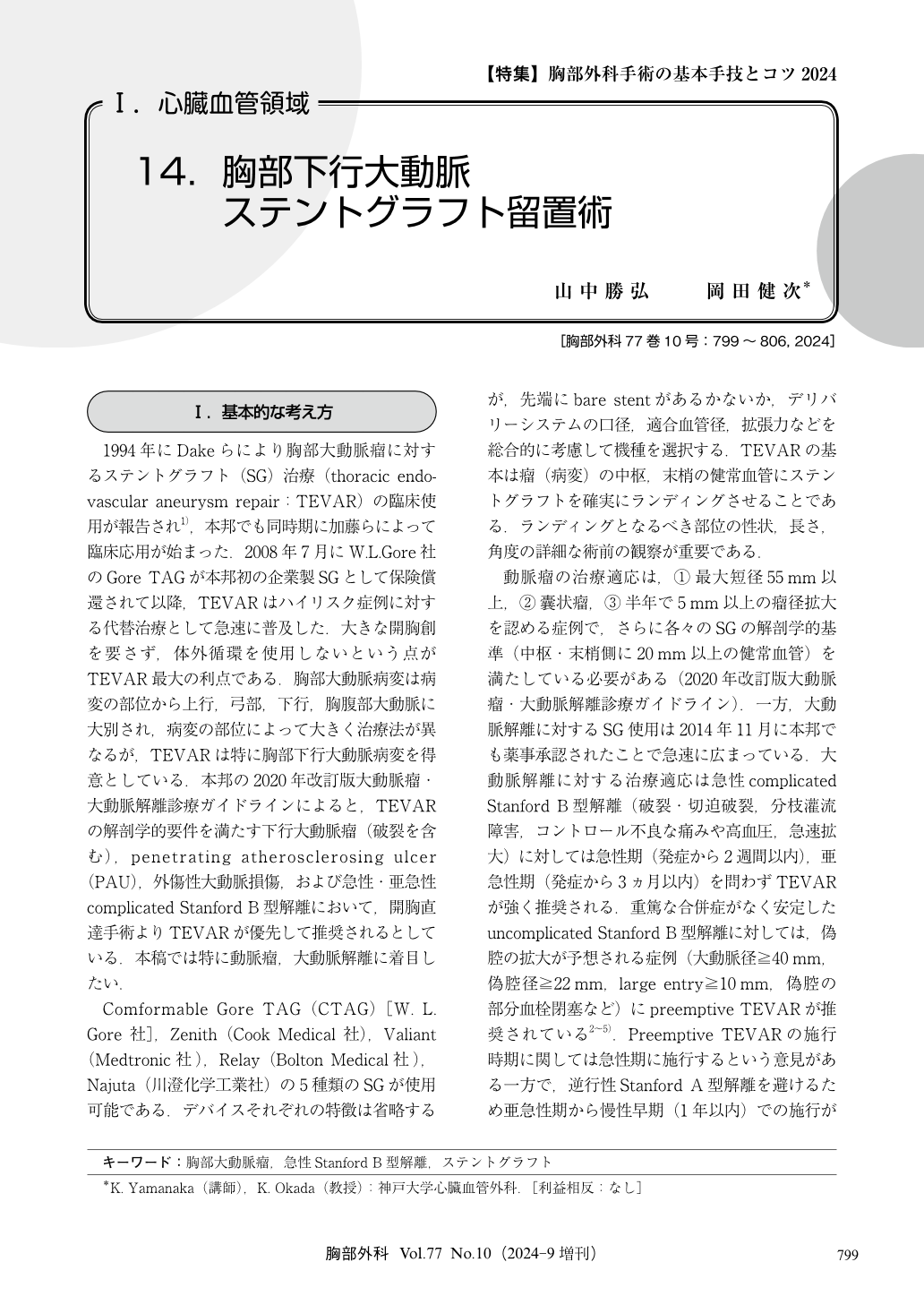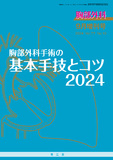Japanese
English
- 有料閲覧
- Abstract 文献概要
- 1ページ目 Look Inside
- 参考文献 Reference
1994年にDakeらにより胸部大動脈瘤に対するステントグラフト(SG)治療(thoracic endovascular aneurysm repair:TEVAR)の臨床使用が報告され1),本邦でも同時期に加藤らによって臨床応用が始まった.2008年7月にW.L.Gore社のGore TAGが本邦初の企業製SGとして保険償還されて以降,TEVARはハイリスク症例に対する代替治療として急速に普及した.大きな開胸創を要さず,体外循環を使用しないという点がTEVAR最大の利点である.胸部大動脈病変は病変の部位から上行,弓部,下行,胸腹部大動脈に大別され,病変の部位によって大きく治療法が異なるが,TEVARは特に胸部下行大動脈病変を得意としている.本邦の2020年改訂版大動脈瘤・大動脈解離診療ガイドラインによると,TEVARの解剖学的要件を満たす下行大動脈瘤(破裂を含む),penetrating atherosclerosing ulcer(PAU),外傷性大動脈損傷,および急性・亜急性complicated Stanford B型解離において,開胸直達手術よりTEVARが優先して推奨されるとしている.本稿では特に動脈瘤,大動脈解離に着目したい.
Since the approval of commercially manufactured stent grafts in Japan in 2008, thoracic endovascular aortic repair (TEVAR) has rapidly gained popularity as an alternative treatment for high-risk patients due to its advantage of not requiring a large thoracotomy or cardiopulmonary bypass. TEVAR has also been attempted for acute Stanford type B aortic dissections, leading to a paradigm shift in treatment strategies. To successfully perform TEVAR, meticulous preoperative preparation is essential, similar to open surgery. This paper aims to provide an overview of the practical aspects of TEVAR.

© Nankodo Co., Ltd., 2024


